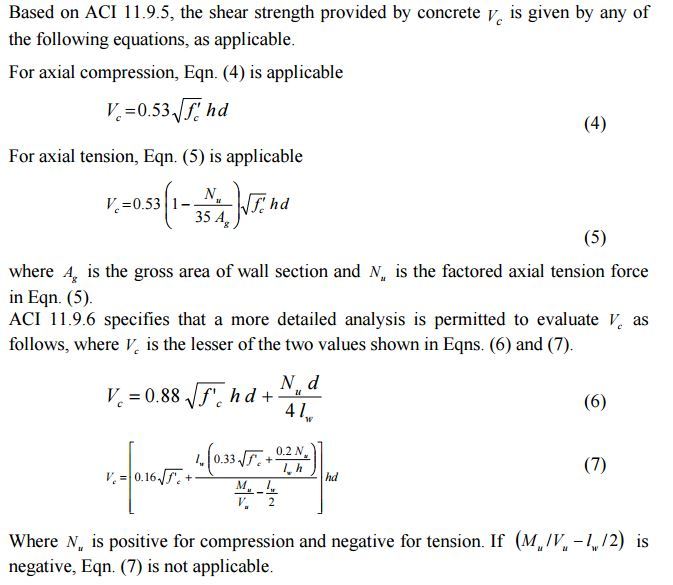PeterPl
Structural
- Jul 4, 2015
- 7
I am canvasing opinions of engineers on shear wall design.
I find AS3600 cl 11.5 very limiting and highly illogical (wrong) for tall buildings.
In Australia frame action is all but ignored (because of flat slab construction). Building stability relies 100% on shear walls often precast.
Yet the AS3600-2009 is very primitive for these vital elements.
My biggest issues (with section 11.5 of AS3600) are with wall shear capacity requirements.
a) The blanket use of 0.8Lw
Typical building core is composed of number of walls that meet at many junctions and corners.
The 0.8Lw is meant for isolated wall with uniform reinforcing, not wall that is part of a multi wall core.
If the wall in question is acting as web in H or box shaped core than full Lw can be used - but not according to the code.
b) Total ignorance of axial loads on shear walls when calculating the vital shear capacity.
(No comment needed here except very tall concrete buildings are built in Australia with significant axial load variants in the walls ignored, positive/compression and negative/tension)
c) There is an upper limit in shear strength with no further strength benefit for concrete >f'c=64 MPa for beams but not walls. 80 MPa precast walls have lot to say for them – high axial buckling strength without reinforcing, enabling thinner panels with lower lifting weight. Code allows full use of the 80 MPa for shear! (I have used them but applied the 64 limit on shear even if not required by code)
d) Previous code made distinction between wall total height and wall floor to floor height. This distinction has disappeared in 2009 code. This is un-conservative.
I find AS3600 cl 11.5 very limiting and highly illogical (wrong) for tall buildings.
In Australia frame action is all but ignored (because of flat slab construction). Building stability relies 100% on shear walls often precast.
Yet the AS3600-2009 is very primitive for these vital elements.
My biggest issues (with section 11.5 of AS3600) are with wall shear capacity requirements.
a) The blanket use of 0.8Lw
Typical building core is composed of number of walls that meet at many junctions and corners.
The 0.8Lw is meant for isolated wall with uniform reinforcing, not wall that is part of a multi wall core.
If the wall in question is acting as web in H or box shaped core than full Lw can be used - but not according to the code.
b) Total ignorance of axial loads on shear walls when calculating the vital shear capacity.
(No comment needed here except very tall concrete buildings are built in Australia with significant axial load variants in the walls ignored, positive/compression and negative/tension)
c) There is an upper limit in shear strength with no further strength benefit for concrete >f'c=64 MPa for beams but not walls. 80 MPa precast walls have lot to say for them – high axial buckling strength without reinforcing, enabling thinner panels with lower lifting weight. Code allows full use of the 80 MPa for shear! (I have used them but applied the 64 limit on shear even if not required by code)
d) Previous code made distinction between wall total height and wall floor to floor height. This distinction has disappeared in 2009 code. This is un-conservative.



![[wink] [wink] [wink]](/data/assets/smilies/wink.gif) )
)